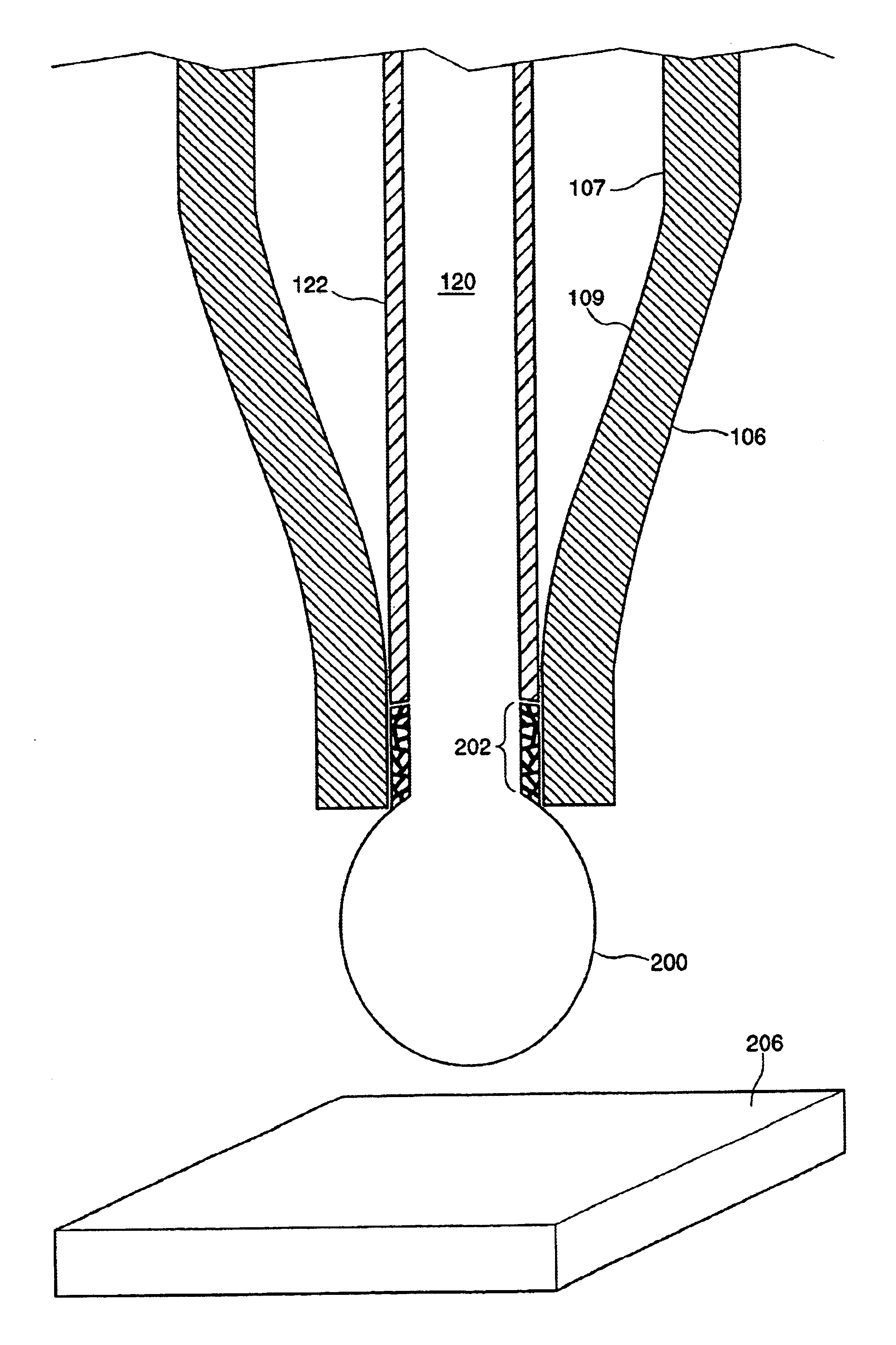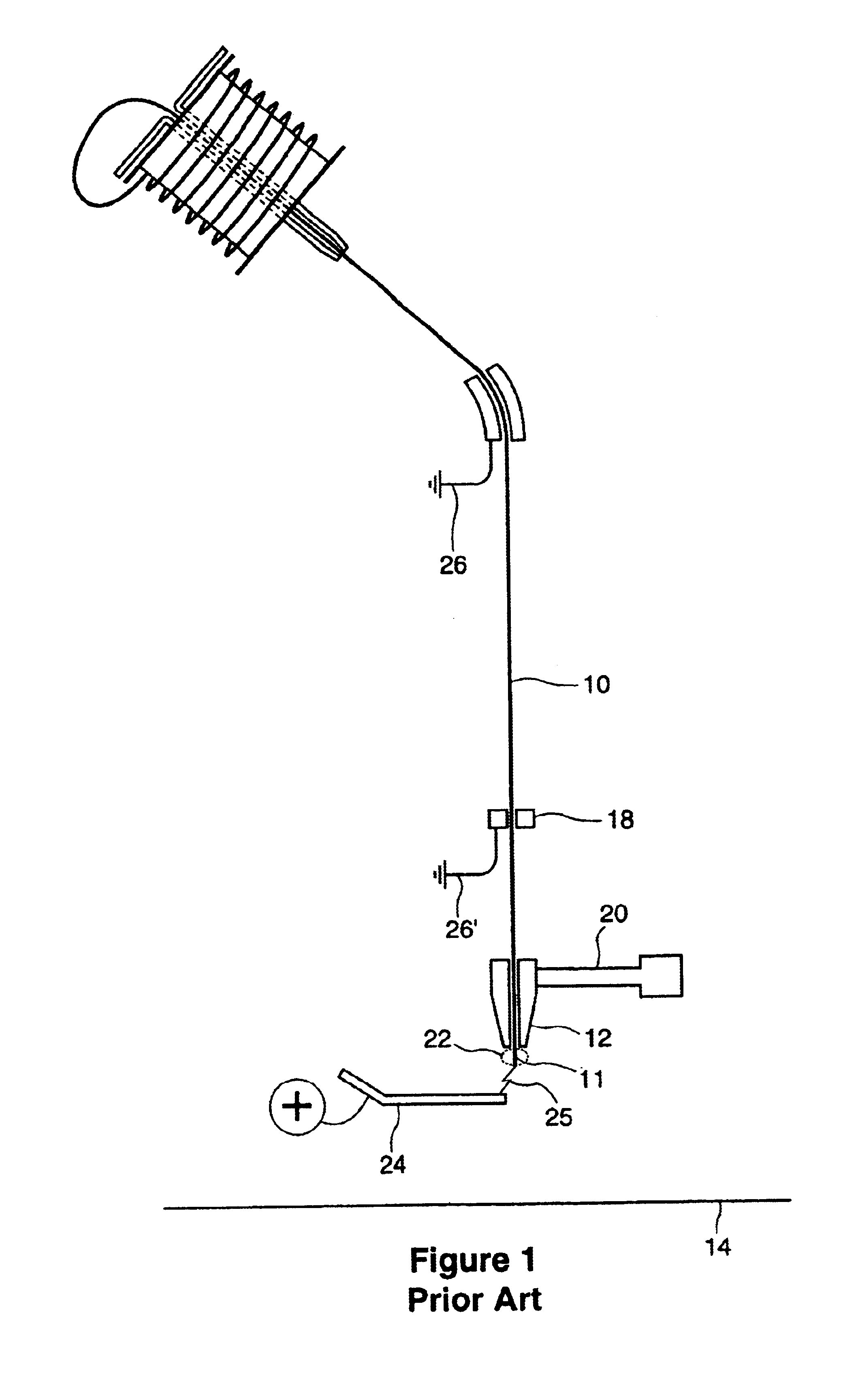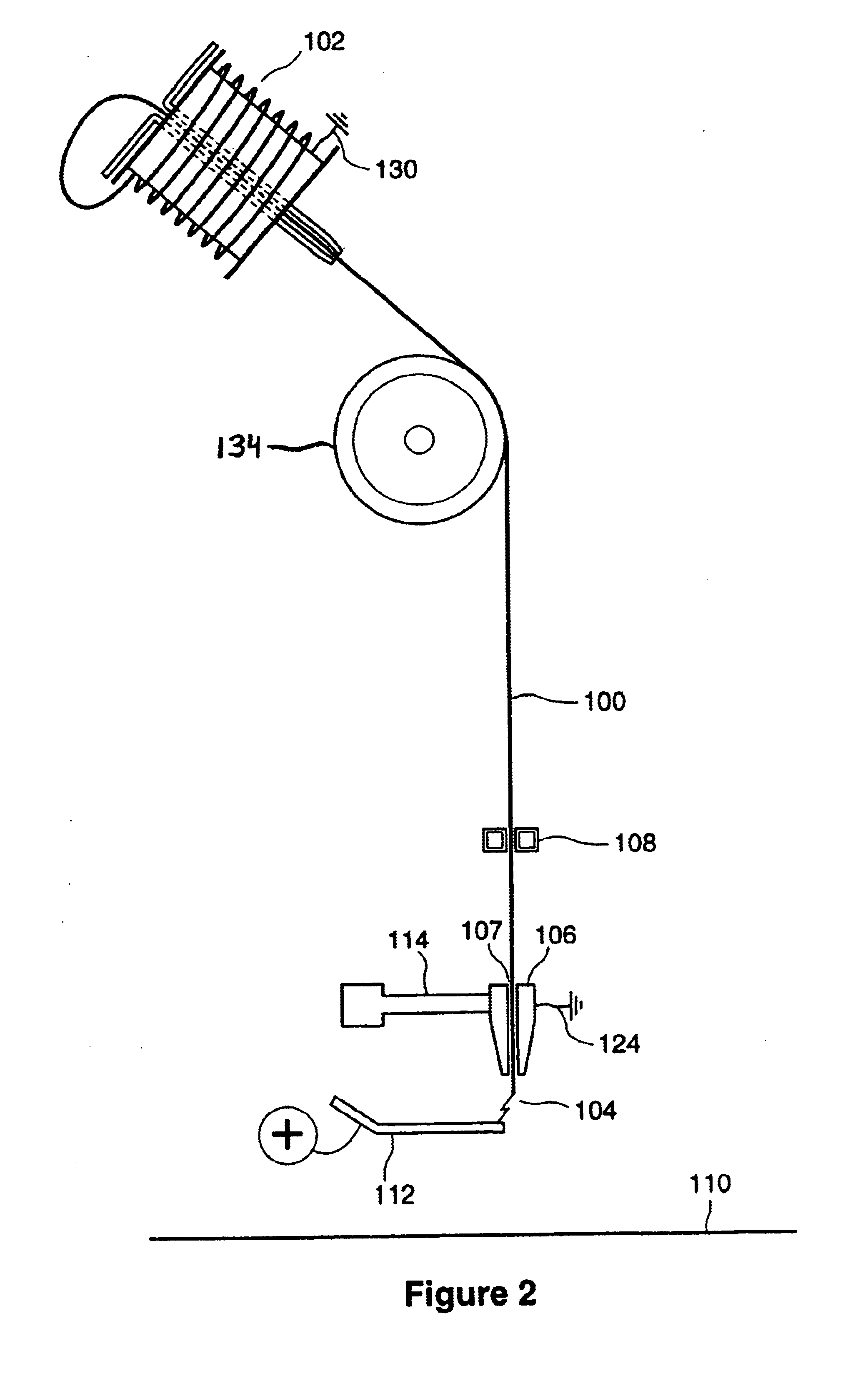Wire bonder for ball bonding insulated wire and method of using same
a technology of insulated wire and wire bonding, which is applied in the direction of auxillary welding devices, conductors, and semiconductor/solid-state device details, etc., can solve the problems of reducing the speed and efficiency of the assembled device, too difficult to manipulate the wire directly during the manufacturing process, and relatively large gaps between wires
- Summary
- Abstract
- Description
- Claims
- Application Information
AI Technical Summary
Benefits of technology
Problems solved by technology
Method used
Image
Examples
Embodiment Construction
[0031]FIG. 2 shows the elements of the present invention. The insulated bond wire 100 is shown extending from a spool 102 remote from a free end 104. The spool acts as a source of insulated wire for the bonder of the present invention. A conductive or metal capillary 106 is also shown having a central bore or tube 107, through which the wire 100 is fed. The capillary 106 acts as a wire holder during the formation of a ball for ball bonding. Although many types of material may be used for the capillary due to an advantageous combination of strength, conductivity, and ease of manufacture, a tungsten carbide capillary is preferred.
[0032]A wire clamp 108 is located above the capillary 106 distal from a surface 110 to which the wire 100 is to be bonded. An electrical discharge torch 112 is shown in position adjacent to the free end 104 of the wire 100, and generally below the capillary or wire holder. Also shown is an ultrasonic transducer arm 114 which generates sufficient ultra-sonic a...
PUM
| Property | Measurement | Unit |
|---|---|---|
| discharge voltage | aaaaa | aaaaa |
| discharge voltage | aaaaa | aaaaa |
| resistance | aaaaa | aaaaa |
Abstract
Description
Claims
Application Information
 Login to View More
Login to View More - R&D
- Intellectual Property
- Life Sciences
- Materials
- Tech Scout
- Unparalleled Data Quality
- Higher Quality Content
- 60% Fewer Hallucinations
Browse by: Latest US Patents, China's latest patents, Technical Efficacy Thesaurus, Application Domain, Technology Topic, Popular Technical Reports.
© 2025 PatSnap. All rights reserved.Legal|Privacy policy|Modern Slavery Act Transparency Statement|Sitemap|About US| Contact US: help@patsnap.com



